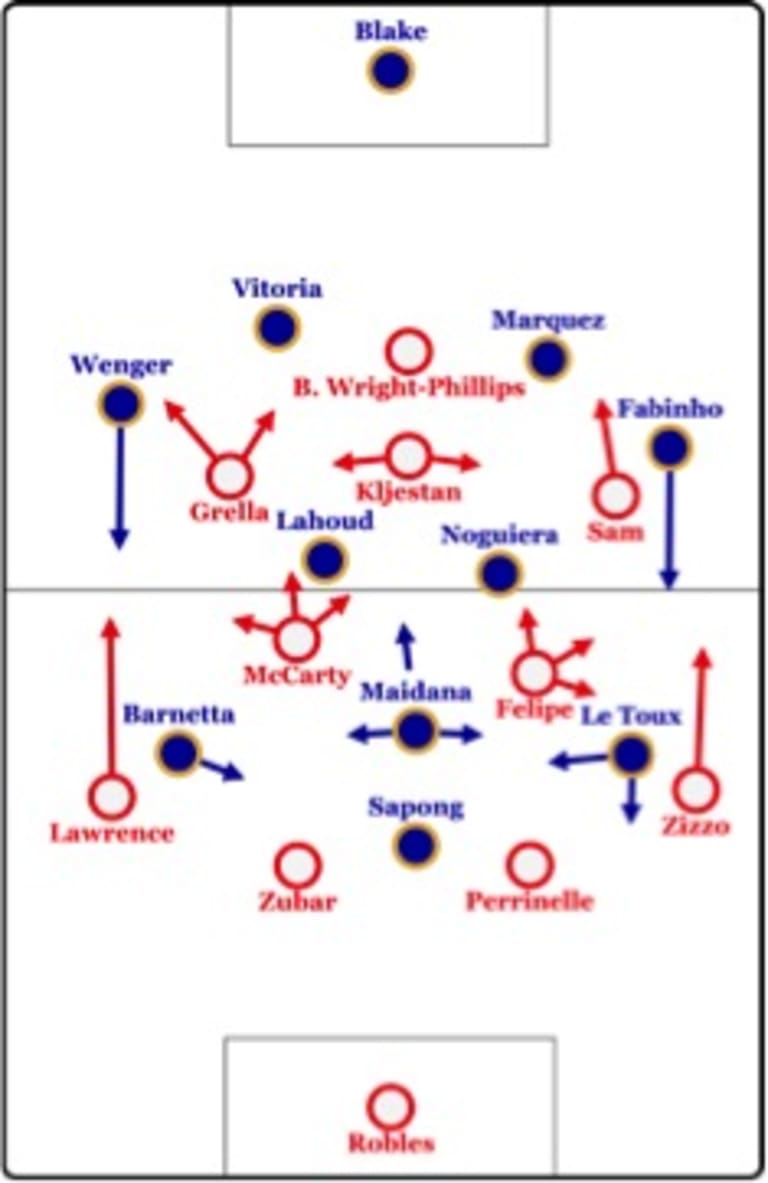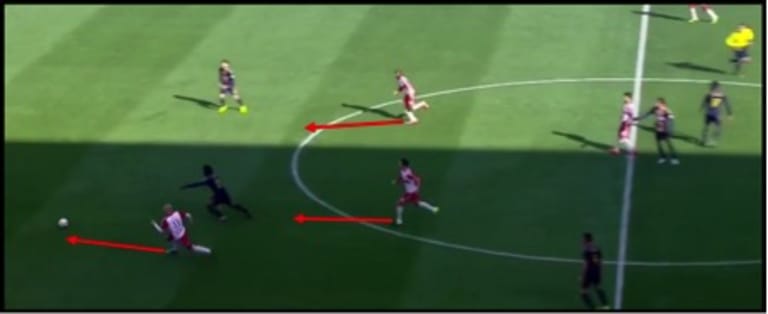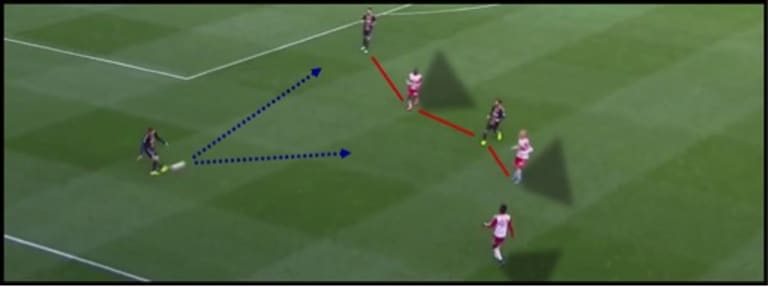
From the 7
th
second of the game, Jesse Marsch’s New York Red Bulls took a hold of a match which now sees them one win away from the Supporters’ Shield. In the energetic and high-octane manner which has become the standard at Red Bull Arena, a pressing Mike Grella took the ball and finished a record-breaking shot. It was from that point onward that the Red Bulls took the game by storm and by the 17
th
minute, the lead had stretched to 3-0.
Marsch set his side up in the same 4-2-3-1 formation we have seen all season and fielded what has become a fairly consistent XI too. Bradley Wright-Phillips led the line in front of a trio of Lloyd Sam, Sacha Kljestan and the two-time scorer Mike Grella. Dax McCarty and Felipe yet again featured as the double pivot between midfield and defense. Amongst the back line was Kemar Lawrence, Damien Perrinelle, Ronald Zubar and Sal Zizzo ahead of Luis Robles between the sticks.
In reply, Philadelphia were also organized in somewhat of a 4-2-3-1 shape. Andre Blake protected the goal behind a four-man defensive line of Fabinho, Richie Marquez, Steven Vitoria and Andrew Wenger. Michael Lahoud again featured in midfield though this time, the African was paired with Vincent Noguiera. Tranquillo Barnetta, Cristian Maidana and Sebastien Le Toux made up the ‘3’ behind C.J. Sapong who led the line prior to Fernando Aristeguieta, who replaced Sapong at halftime.
The Red Bulls Press
It was their typical pressing which led to the third goal of the game. The credit must be given to Wright-Phillips whose backwards pressing was crucial in the execution of a small trap as Philadelphia looked to move the ball into the center. Unaware of the imminent pressure, Michael Lahoud gave up possession while his teammates were moving up to initiate a break of their own. As a result, the Philadelphia defense was left open while Grella used his dribbling ability to create the shot following an incisive pass from McCarty.

Straight from the kickoff, a trio of Grella, Kljestan and Wright-Phillips break off into an intense press down the center. With the Philadelphia players moving upfield for the usual long ball at the start, their shape is completely open after the misplaced ball bypassed the midfielders. This left Grella able to make a direct run against the defensive line and, with some luck, finish in the bottom left corner.
Marsch’s side did well to use their pressing to expose Philadelphia’s disconnection in possession. When the opposition were building up from the defense, the defensive central control constantly forced the ball into isolated areas on the wings.
An example of this can be seen below. Mike Grella leads the press alongside Wright-Phillips and Lawrence. By blocking the inside passes, the trio force an aimless long ball forwards which is easily recovered, emphasising the weak possession structure as Wenger has just two passing options in support.

McCarty and Felipe Open the Center for Collective Attacking Mechanisms
A considerable part of the Red Bulls’ attacking strategy was based around finding space between the midfield and defense as Marsch looked to use the passing ability of Felipe and Dax McCarty to get the ball into dangerous areas. The midfield pairing played many vertical passes between the channels towards the ‘3’ and were largely successful in doing so.

With Kljestan, Sam and Grella all in close proximity to one-another, the Red Bulls’ attacks were much less individual and it was much more common to see quick combinations being attempted amongst the front four.
This difference in attacking tactics perhaps mirrors the words of Jesse Marsch following the victory against Philadelphia, as he stated:
“I don’t like when people talk about our payroll being so low because I think it belittles our players. I think we have a really talented team. Yeah, we don’t have the big superstars that you spend $5 million a pop on a guy, but we have a really balanced team, a really talented team, and I think I’d take my group of players over any group of players in this league and I truly mean that”
The Red Bulls have not taken the route which many have in this league of making big signings and instead have developed a collectively-stronger team which is full of talent with little individuality.
Philadelphia up their Tempo and make Better Central Access
After a poor start, Philadelphia responded with a more aggressive defensive setup. They started not only pressing higher up the pitch, but with more of an emphasis on man-marking in space around the ball.
Although it didn’t bring them the results they needed to get back into the game, it caused a few issues for the Red Bulls who at times struggled to make a clean progression of the ball from the back. It was after Le Toux’s second half goal where the Red Bulls regained their composure and improved against the pressure.
With a higher intensity on the ball too, Philadelphia began to break through the Red Bulls’ pressing which seemed to decline at the 4-0 mark. Although they struggled to attack through the center in previous matches, they managed to do so on a common basis in the second half against RBNY, primarily for two reasons:
- Since their 3-1 defeat to Toronto, it seems Philadelphia worked on a common attacking weakness as their midfield was more oriented to penetrating the center. Both Barnetta and Le Toux had roles which saw them enter the centre and half-spaces more as opposed to their more limited wing-based ones over two weeks ago.
- With the game at 4-0 and the result all but sealed, some complacency seeped into the organization of the Red Bulls. It was Le Toux’s wake-up call which brought the home side back into action and they stepped their game up from then onwards.
As the game moved on into the later stages, the Red Bulls re-established a control over the game. Unable to build on their only goal of the game, Philadelphia were unable to develop any momentum and gradually slowed back down. Off of the ball, their intensity dropped as RBNY had more stable possession in the opposition’s half while the attacks of the Union also slowed down.
Despite these periods of complacency, the result was still reflective of the performance and the Red Bulls picked up their 17th win of the MLS season in emphatic style. For the majority of the game, Marsch’s side exercised their superiority in a strong showing with a particularly brilliant first half display. This victory now leaves them with one game left in the MLS season - a trip to Chicago - where if they win, they almost surely clinch the Supporters’ Shield.


